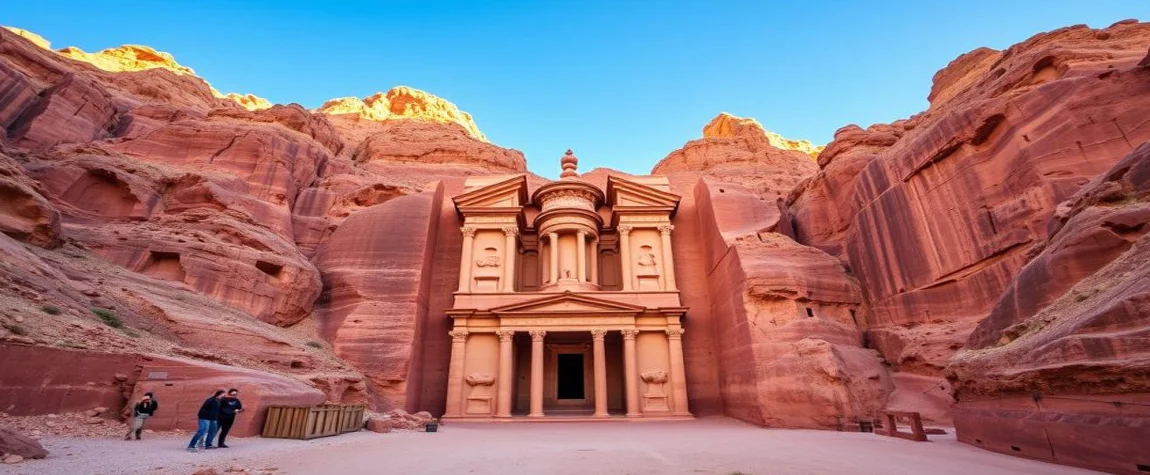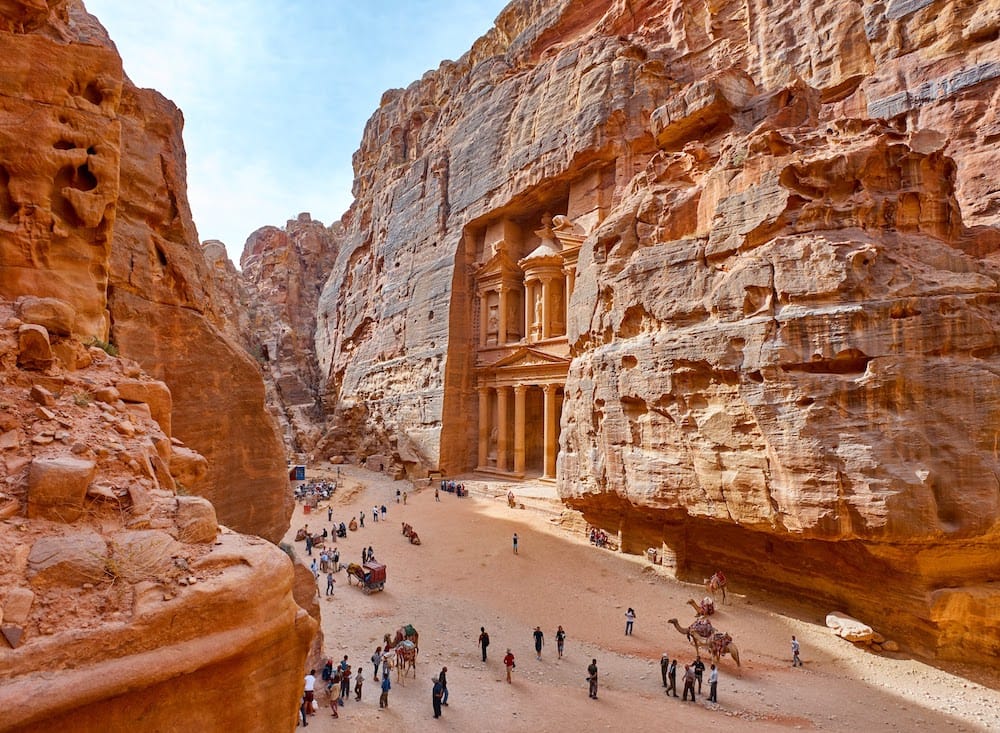



Petra is a famous archaeological site in Jordan's southwestern desert. Dating to around 300 B.C., it was the capital of the Nabatean Kingdom. Accessed via a narrow canyon called Al Siq, it contains tombs and temples carved into pink sandstone cliffs, earning its nickname, the "Rose City." Perhaps its most famous structure is 45m-high Al Khazneh, a temple with an ornate, Greek-style facade, and known as The Treasury. ― Google
The best times are spring (March–May) and autumn (September–November) when temperatures are mild and the weather is ideal for hiking and exploring. Summer can be extremely hot (up to 40°C), and winters can be chilly with occasional rain.
From Amman: Around 3–4 hours by car or bus.
By Bus: JETT buses run daily from Amman to Petra (Wadi Musa).
By Car: Renting a car offers flexibility and scenic routes.
From Aqaba: About 2 hours by road, a good option if coming from the Red Sea.
The Treasury (Al-Khazneh) – Iconic rose-red facade carved into rock, especially breathtaking at sunrise.
The Siq – A dramatic narrow gorge leading to the Treasury, lined with towering sandstone walls.
The Monastery (Ad Deir) – A massive structure reached by climbing over 800 steps; less crowded than the Treasury.
The Royal Tombs – A cluster of elaborate burial sites carved into the cliffs.
The Great Temple – One of Petra’s largest archaeological sites, showcasing Nabataean architecture.
The High Place of Sacrifice – Panoramic views after a steep hike; ancient site used for rituals.
Petra by Night – Magical nighttime experience with candle-lit paths and traditional music in front of the Treasury.
Hike to hidden viewpoints – such as the back trail to the Monastery or the Al-Khubtha trail for Treasury views from above.
Camel or donkey rides – Available but optional; often used to climb steep paths.
Learn from Bedouin guides – They often share stories, history, and local traditions.
Photography – Golden hours (early morning or late afternoon) are perfect for capturing Petra’s colors.
Explore Little Petra – A smaller archaeological site nearby, less crowded and free to enter.
Stay in Wadi Musa, the town adjacent to Petra. It offers a range of options:
Budget hostels – Simple and close to the Petra entrance.
Mid-range hotels – Comfortable with local charm, many offer free shuttles.
Luxury resorts – Some provide views of the Petra mountains and premium amenities.
Also consider Bedouin-style camps just outside town for a more immersive experience.
Jordanian specialties like Mansaf (lamb with yogurt sauce), Magloubeh (rice and vegetables), and Zarb (Bedouin BBQ cooked underground).
Local restaurants often serve hearty buffets with Middle Eastern mezze.
Street snacks: falafel, shawarma, and fresh juices.
Tea with mint or sage is a must—often shared as a sign of hospitality.
Petra is deeply connected to the Nabataean civilization, which thrived through trade and water engineering.
The area is still home to Bedouin communities, who maintain traditional lifestyles and often work as guides or artisans.
Modest dress is appreciated, especially in rural areas.
Hospitality is highly valued—visitors are often offered tea or conversation.
Wear sturdy walking shoes – there’s lots of uneven terrain and long distances.
Bring sun protection – hat, sunglasses, sunscreen, especially in summer.
Carry water and snacks – while there are vendors, they may be sparse along trails.
Get the Jordan Pass – covers visa fees and entrance to Petra and other sites (worth it if visiting multiple places).
Start early – to avoid heat and crowds, especially for the Treasury and Monastery.